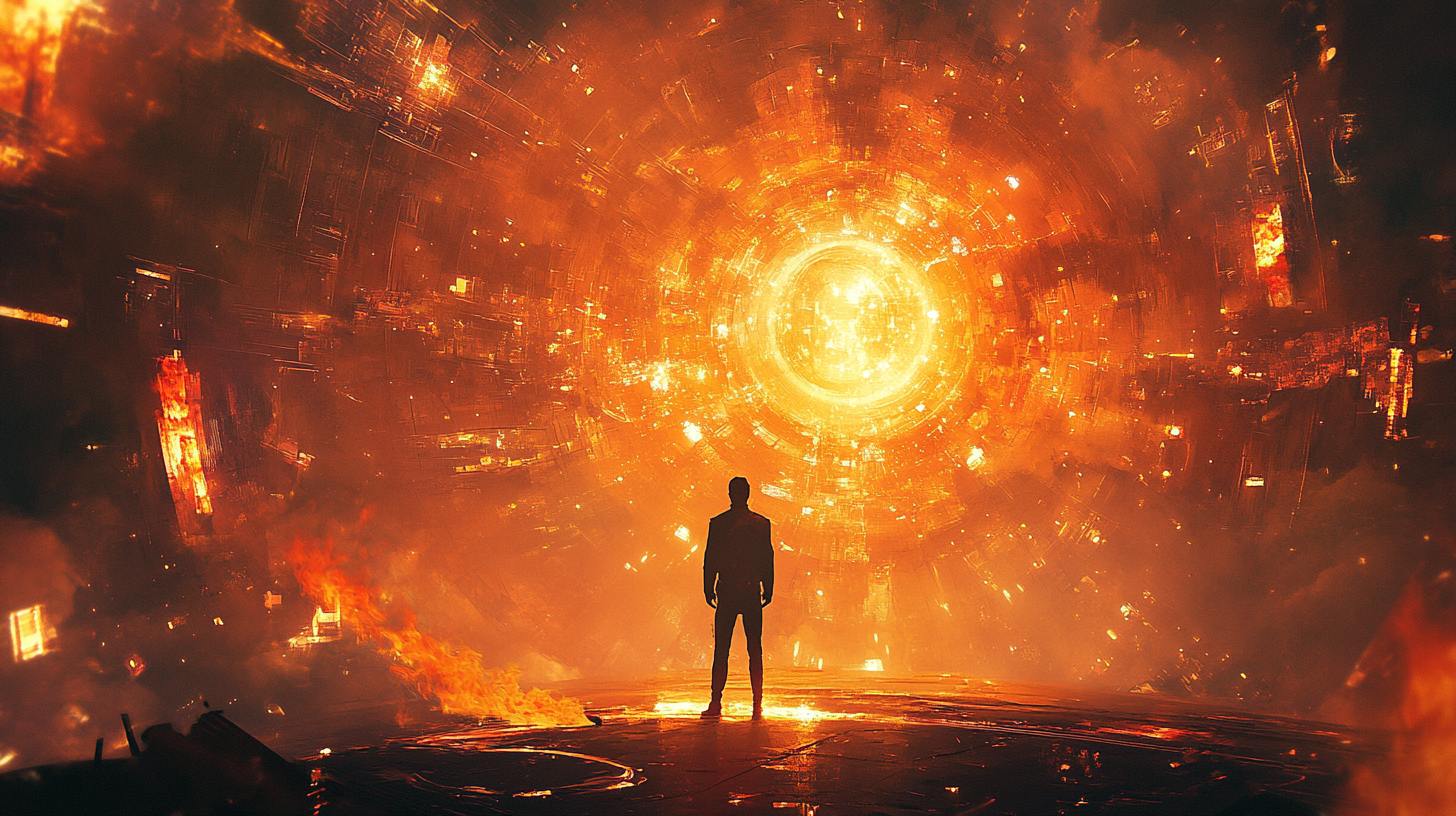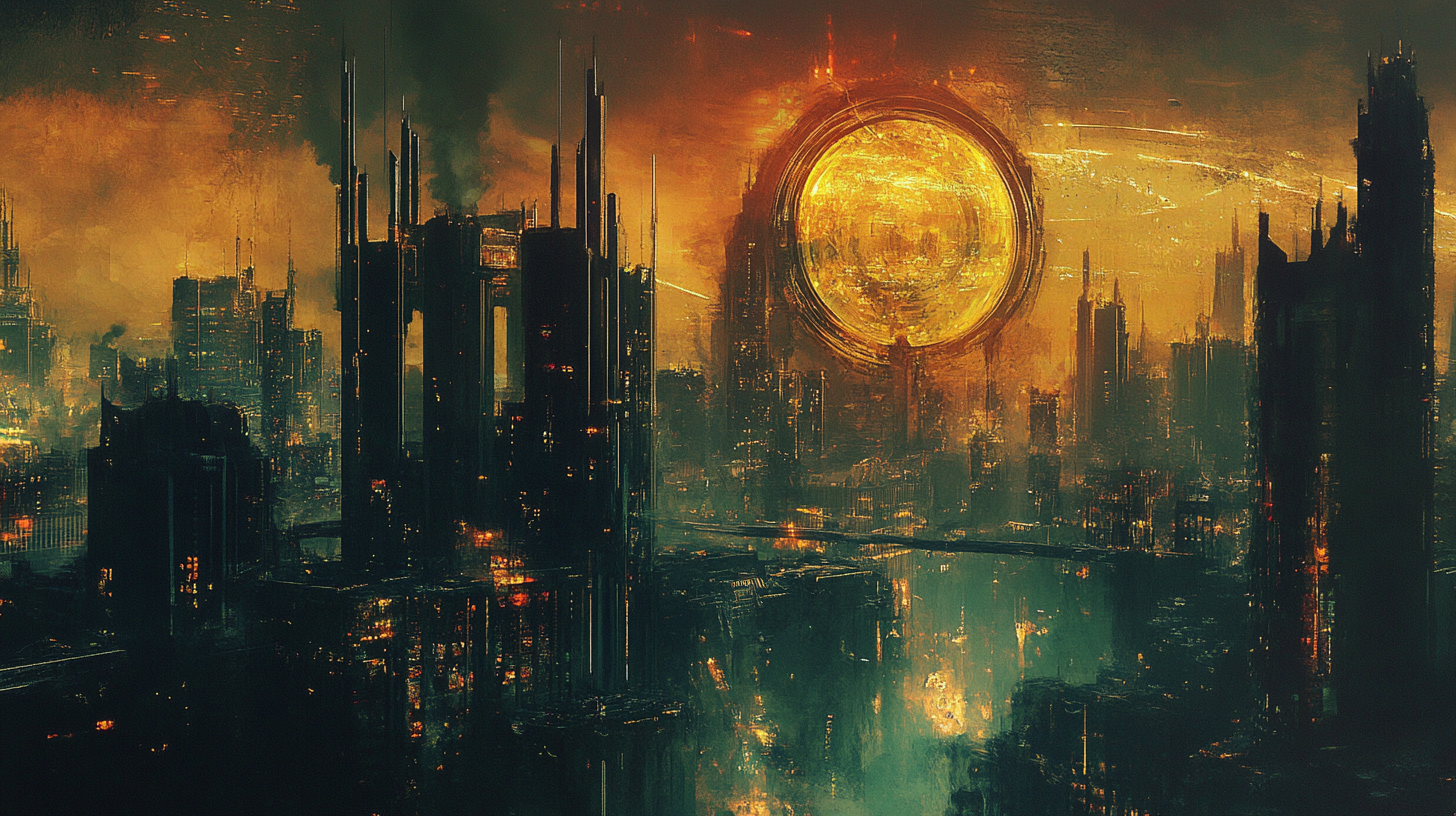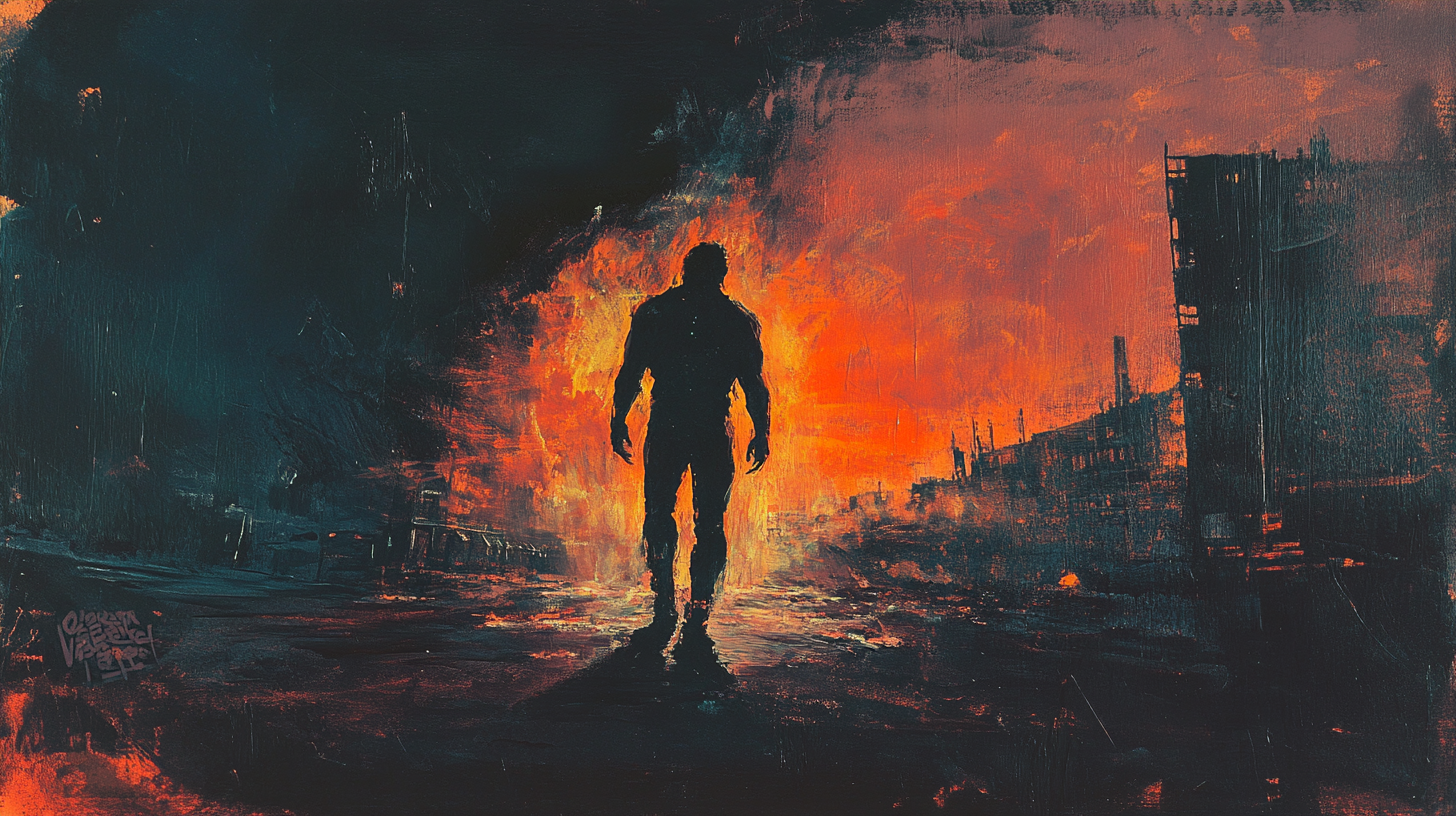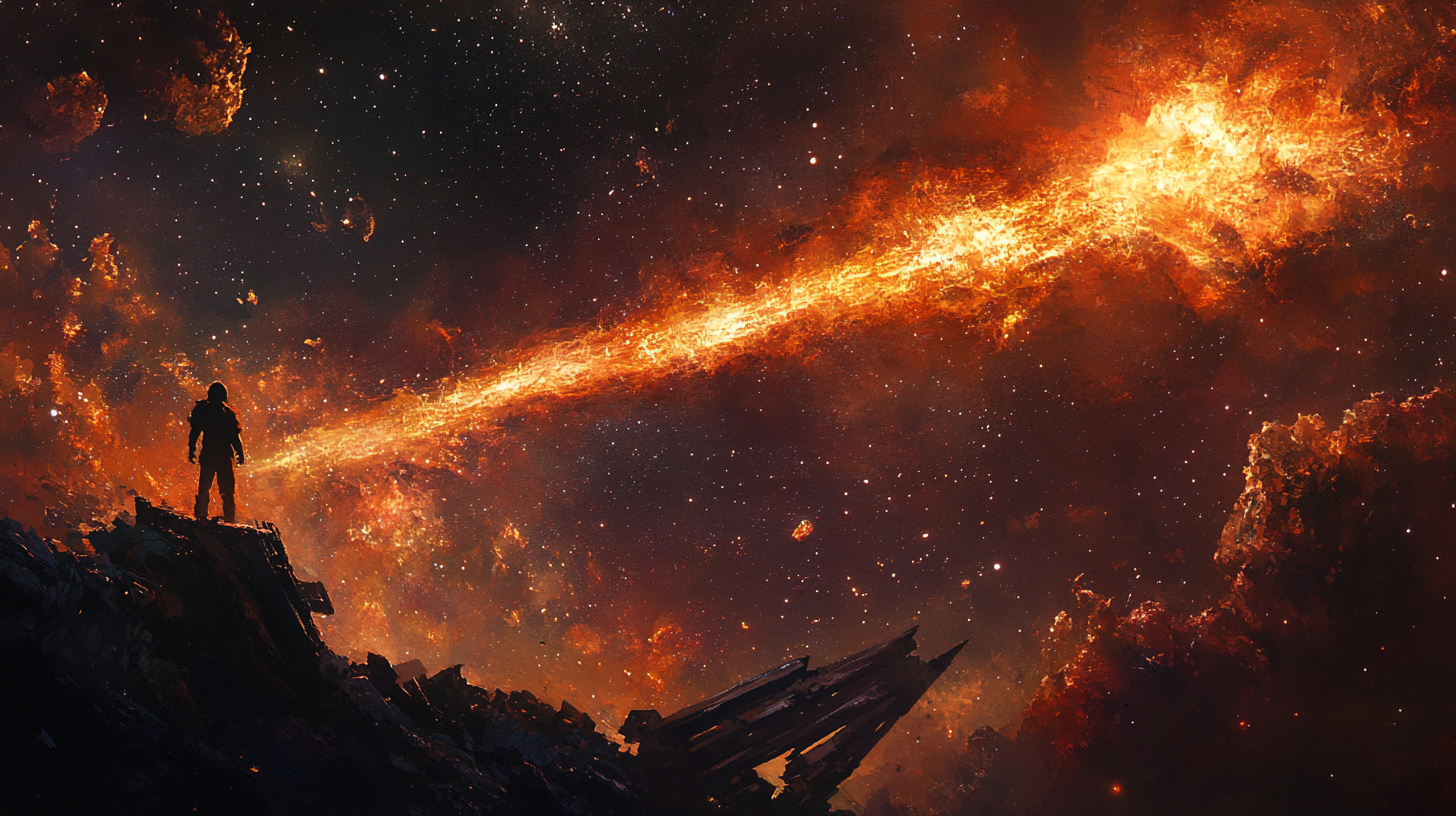"The Stars My Destination" Still Burns with Unmatched Fury
Alfred Bester’s "The Stars My Destination" remains a fierce, visionary work of science fiction, blending brutal storytelling with bold typographic innovation in a future both broken and eerily familiar.

The Timeless Shock of Bester’s Vision
There are books that feel like controlled experiments. Then there are those that detonate in the reader’s hands. Alfred Bester’s "The Stars My Destination," published in 1956, belongs to the second kind. It did not arrive with the solemn gait of many of its contemporaries. It lunged out of the post-war science fiction scene like a man on fire, both literally and spiritually. This was not the stuff of clean futures or wise galactic councils. Bester delivered something jagged, volatile, and personal.
At a time when American science fiction was settling into expected roles with military fables, planetary diplomacy, and tidy moral endings, Bester was tearing at the form itself. He wrote like a man electrified, unwilling to stand still or play safe. His style was erratic in the best sense—urgent, sharp, and at times dreamlike. Most books from that era have the feel of museum pieces. This one still growls.
That it remains unruly today is no accident. "The Stars My Destination" pulses with a rare kind of energy. Bester captured something that would not be contained by its own era. What he found was not just a vision. It was a spark. And it still burns.
A Savage Man in a Shattered World
The future imagined in "The Stars My Destination" is not sleek or orderly. It is fractured and brutal. Society has been reshaped by the discovery that men can teleport with the power of their own minds. This ability, called jaunting, has not elevated humanity. It has splintered it. Entire cities have collapsed inward as economic systems buckle under the weight of instant travel. Class divisions have hardened. Security and privacy have become luxuries. The rich retreat behind walls and mental conditioning. The poor remain exposed and desperate.

In this volatile world, corporate fiefdoms replace nation-states. Loyalty is bought and sold. Institutions exist only to serve the powerful. The rule of law bends to convenience. Honor is a commodity. It is not a world at peace. It is a world twitching with paranoia and raw ambition.
Out of this chaos crawls a man who is not heroic in any conventional sense. He is crude, angry, and barely civilized. His early life is marked by abandonment and neglect. His future seems determined by accident or indifference. But something changes in him. Whether by design or by fury, he begins to move with purpose.
The book gives no comfort. It does not flatter the reader or offer easy morality. Its world is one where survival requires cunning, strength, and an appetite for violence. It is a world where teleportation has not brought enlightenment. It has only made escape faster. In this setting, character is not revealed through quiet reflection but through desperate action.
Bester's future is not a far-flung fantasy. It is a cracked mirror held up to the present. The ugliness it shows is not alien. It is human. And it is very close to home.
Typographic Flair Meets Narrative Drive
Most science fiction novels from the 1950s follow a visual and structural formula. The pages are orderly. The language is plain. Alfred Bester had no patience for that. "The Stars My Destination" explodes across the page with visual chaos and linguistic invention. It is not only read. It is experienced.

Bester plays with layout in ways that still feel reckless. He uses spacing, typography, and visual composition to mirror psychological states. Words scatter, spiral, or shatter to reflect a character’s mind breaking or awakening. Fonts change to signal shifts in perception or reality. The page becomes part of the story, not just its container.
This was radical. Science fiction at the time was still fighting for literary legitimacy. Most writers were cautious. Bester charged in with experimental techniques more often found in avant-garde theater or European modernism. He didn’t ask for permission. He made the novel into something tactile and alive.
His use of language is just as aggressive. Dialogue is clipped and sharp. Descriptions alternate between the brutal and the poetic. Slang, jargon, and invented terminology crash together without apology. The narrative voice is fast and impatient. It drives the reader forward, demanding attention and offering no reprieve.
Yet none of it is for show. The book’s style is inseparable from its themes. The broken layout reflects a broken world. The disjointed prose mirrors a fractured man. Even when the novel seems unhinged, it is always deliberate. Bester knew exactly what he was doing. He wanted the reader to feel off balance.
This kind of narrative experimentation did not become common in science fiction until much later. Writers like William S. Burroughs and J. G. Ballard would push similar boundaries, but Bester was there first. He proved that science fiction could be wild and literary at the same time. He didn’t just bend the form. He set it on fire.
The Moral Ambiguity of Gully Foyle
Gully Foyle is not the kind of figure a reader admires. He is the kind a reader follows, unwillingly at first, then with a growing sense of awe. There is nothing noble about him. He begins as a broken man, dull with rage, brutal in thought and action. His voice is coarse. His instincts are base. What makes him unforgettable is not where he starts, but how far he travels and how little guidance he receives along the way.

Foyle’s transformation is not gentle. It is violent, unpredictable, and at times almost mythic. He does not grow through enlightenment. He changes through collision. Every encounter shapes him. Every betrayal carves something into him. His mind, once empty, becomes a weapon. His body, once sluggish, becomes dangerous. What remains constant is his will. It is not noble purpose that drives him. It is vengeance.
Yet through this single-minded pursuit, other forces begin to stir. Beneath the blood and smoke, questions emerge. What does it mean to be a man, not a beast? What happens when the powerless become powerful? What kind of soul grows in a world that punishes mercy and rewards cunning?
Bester never offers a clean answer. He places Foyle at the center of a decaying society where power is hoarded and truth is disposable. The institutions surrounding Foyle are no more moral than he is. They are richer, better educated, more articulate—but just as ruthless. Class, money, and mental conditioning form the gates of power, and Foyle was never meant to pass through them.
The book does not ask whether Foyle is good. It asks what he can become. That is a different question. It is also more dangerous. The novel offers no guideposts, no hand-holding. Just a man, half-mad, clawing his way through a world that taught him nothing but pain.
In that climb, there is something terrifying. And something profound.
Fire That Will Not Die
When "The Stars My Destination" first appeared, it was ahead of its time in ways that made it hard to place. Critics were unsure what to make of its fury, its violence, its chaotic brilliance. Some dismissed it as erratic. Others sensed it was doing something new but could not say what. It took years—decades, really—for readers to catch up.

By the 1980s, its reputation had shifted. Writers and critics began to see it not as a curiosity but as a cornerstone. The rawness that once seemed uncontrolled now looked prophetic. The stylistic leaps that had once confused reviewers came to be viewed as bold acts of invention. It found new champions and new readers, especially as the genre moved into darker, sharper territory. The rise of cyberpunk only made Bester look more visionary.
Today, the book feels strangely current. The corporate grip on power. The erosion of moral clarity. The sense that technology amplifies our flaws rather than solving them. These are no longer warnings. They are facts. Bester saw it coming. He didn’t preach. He dramatized. He lit a fuse and let it burn.
What remains is not just a story. It is a challenge. "The Stars My Destination" dares the reader to endure its harsh world, to confront its savage lead, and to emerge with questions rather than comfort. It is a book that rejects nostalgia, even as it claims a permanent place among the great works of science fiction.
There are cleaner books from the golden age. There are quieter ones, more polite ones. But few are as alive as this one. It is not safe. It never was. That is why it lasts.

